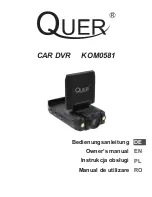
correction, you can change the relative value. We will call the value “bad pixels threshold”.
3. Calibration
Calibration is an operation to obtain the original data for NUC. For camera, calibration is
actually an algorithm after taking a uniform target image. In work site, the uniform target can
be clear sky, the built-in shutter, or the closed lens cover; for you, calibration is pressing
some buttons in the keyboard!
4. Background
When you calibrate, a uniform image you get is called background. It is the original data needed
for auto calculating calibration coefficient K. Generally, you need to get 2 backgrounds here
called B1, B2. They stand for background with high-temp and low-temp. They are saved inside
of the camera, and come into function when needed.
5
、
SDRAM & FLASH
B1, B2, K1, and some control coefficients are saved in a FLASH inside of the camera. When
powering on and adjusting the camera, you can get the data from the FLASH to the SDRAM.
(Take PC for example, FLASH is the hard disk, and SDRAM is the EMS memory). When
powering off, data in SDRAM will not be saved.
10
Summary of Contents for IR136
Page 24: ...24...










































